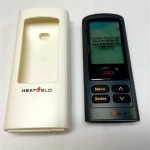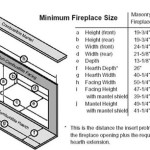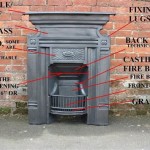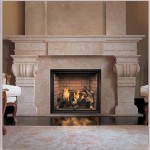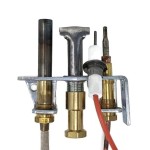Electric Inserts for Existing Fireplaces: A Comprehensive Overview
The integration of an electric insert into an existing fireplace offers a practical and aesthetically pleasing solution for homeowners seeking to modernize their heating and decorative options. This approach allows for the retention of the traditional fireplace's charm while simultaneously benefiting from the efficiency and convenience of electric heating technology. This article will provide a comprehensive overview of electric fireplace inserts, covering various aspects such as their functionality, advantages, installation considerations, maintenance, and selection criteria.
Electric fireplace inserts are self-contained units designed to fit within the opening of an existing wood-burning or gas fireplace. These inserts typically feature a realistic flame effect, generated using LED lights and reflective components, coupled with a heating element. This combination provides both visual appeal and supplemental heating capabilities, effectively transforming an underutilized or inefficient fireplace into a functional and attractive focal point.
Key Advantages of Electric Fireplace Inserts
Electric fireplace inserts offer a range of benefits compared to traditional wood-burning or gas fireplaces, making them a popular choice for homeowners seeking a convenient and efficient heating solution. The advantages are described in the following elaboration:
Enhanced Safety: Unlike wood-burning fireplaces, electric inserts eliminate the risks associated with open flames, sparks, and the build-up of creosote. There is no need to worry about chimney fires, backdrafts, or the potential for carbon monoxide poisoning. The absence of combustion also contributes to improved indoor air quality, as there are no emissions of smoke, soot, or other harmful pollutants.
Improved Efficiency: Electric fireplace inserts are significantly more energy-efficient than traditional fireplaces. They convert nearly 100% of the electrical energy into heat, minimizing energy waste. Many models also feature thermostats and timers, allowing for precise temperature control and programmed heating schedules, further optimizing energy consumption. This efficient operation results in lower heating bills compared to traditional fireplaces, particularly when used for supplemental zone heating.
Simplified Installation and Maintenance: The installation of an electric fireplace insert is generally straightforward and less complex than installing a wood-burning or gas appliance. It typically involves simply sliding the insert into the existing fireplace opening and plugging it into a standard electrical outlet. No venting or gas line connections are required, eliminating the need for expensive and time-consuming renovations. Furthermore, maintenance is minimal, usually consisting of periodic cleaning of the glass screen and occasional bulb replacement. There are no chimneys to sweep, ashes to remove, or gas lines to service.
Convenience and Control: Electric fireplace inserts offer a high degree of convenience and control. They can be easily turned on and off with the push of a button, and many models come with remote controls that allow for adjusting the flame intensity, heat output, and timer settings from a distance. The ability to customize the flame effect and heat output independently allows homeowners to enjoy the ambiance of a fireplace without the heat, making them suitable for year-round use. The thermostatically controlled heating also ensures consistent and comfortable temperatures, eliminating the need for manual adjustments.
Aesthetic Versatility: Electric fireplace inserts are available in a wide variety of styles, sizes, and finishes, allowing homeowners to choose an insert that complements their existing décor. From traditional designs that mimic the look of a real wood-burning fireplace to more modern and contemporary styles, there is an electric insert to suit virtually any aesthetic preference. Some models even feature customizable flame colors and ember bed options, further enhancing their visual appeal. The ability to seamlessly integrate an electric insert into an existing fireplace opening preserves the architectural integrity of the room while adding a touch of modern elegance.
Installation Considerations for Electric Fireplace Inserts
While the installation of an electric fireplace insert is generally straightforward, there are several important considerations to keep in mind to ensure a safe and successful installation. These considerations are described as follows:
Fireplace Opening Measurements: The first step is to accurately measure the dimensions of the existing fireplace opening. This includes the width, height, and depth. It is crucial to select an insert that is slightly smaller than the opening to allow for proper ventilation and ease of installation. Consult the manufacturer's specifications for the recommended clearance requirements.
Electrical Requirements: Electric fireplace inserts typically require a standard 120-volt electrical outlet. The amperage rating of the insert should be compatible with the breaker size of the electrical circuit. In some cases, a dedicated circuit may be required, particularly for larger inserts that draw a significant amount of power. It is advisable to consult with a qualified electrician to ensure that the electrical system is adequate for the intended use.
Existing Fireplace Condition: Before installing an electric fireplace insert, it is important to inspect the condition of the existing fireplace. Ensure that the chimney is properly sealed to prevent drafts and moisture from entering the room. If the fireplace has been previously used for wood-burning, it is recommended to have the chimney professionally inspected and cleaned to remove any creosote build-up. Any necessary repairs to the fireplace structure should be completed before installing the insert.
Ventilation: While electric fireplace inserts do not require venting in the same way as wood-burning or gas fireplaces, proper ventilation is still important to prevent overheating. Ensure that there is adequate airflow around the insert to allow for heat dissipation. Avoid blocking any ventilation openings on the insert.
Professional Installation: Although many homeowners can install an electric fireplace insert themselves, it is always advisable to consult with a qualified professional, particularly if there are any electrical or structural concerns. A professional can ensure that the insert is installed safely and correctly, minimizing the risk of problems down the line.
Maintenance and Care of Electric Fireplace Inserts
Electric fireplace inserts require minimal maintenance compared to traditional fireplaces. However, regular cleaning and occasional component replacement are necessary to ensure optimal performance and longevity. The following are some maintenance tips:
Regular Cleaning: The glass screen of the electric fireplace insert should be cleaned regularly to remove dust and fingerprints. Use a soft, lint-free cloth and a mild glass cleaner. Avoid using abrasive cleaners or scouring pads, as these can scratch the glass. The interior of the insert can be vacuumed periodically to remove any dust or debris that may accumulate.
Bulb Replacement: The LED lights that generate the flame effect in electric fireplace inserts have a long lifespan, but they will eventually need to be replaced. Consult the manufacturer's instructions for the recommended bulb type and replacement procedure. In some cases, it may be necessary to replace the entire flame effect unit.
Air Filter Cleaning: Some electric fireplace inserts have air filters that help to remove dust and pollen from the air. These filters should be cleaned or replaced regularly, typically every few months, depending on the air quality in the home. Refer to the manufacturer's instructions for the location of the air filter and the recommended cleaning or replacement procedure.
Overheating Protection: Electric fireplace inserts are typically equipped with an overheat protection mechanism that will automatically shut off the unit if it becomes too hot. If the insert repeatedly shuts off due to overheating, it is important to investigate the cause. Check for blocked ventilation openings, excessive dust build-up, or other potential problems. If the issue persists, consult with a qualified technician.
Professional Servicing: While electric fireplace inserts are generally reliable, they may occasionally require professional servicing. If the insert is not functioning properly, such as if the flame effect is not working or the heating element is not producing heat, it is advisable to contact a qualified repair technician. Attempting to repair the insert yourself can be dangerous and may void the warranty.

Electric Fireplace Inserts Guide Direct Fireplaces

How To Install An Electric Fireplace Insert Fireplaces Direct Learning Center

Fireplace Insert Installation Wood Inserts Gas Pellet And Electric

9 Best Electric Fireplace Inserts Of 2024 Tested And Reviewed

ᑕ❶ᑐ How To Install An Electric Fireplace Insert Magikflame Blog

Modern Flames Redstone 30 Inch Built In Electric Fireplace Insert Firebox Heater Rs 3021 Fireplaces Depot

Valuxhome 23 In Electric Fireplace Insert With Overheating Protection 750 Watt 1500 Black Ef23t Hd The Home Depot

Fireplace Insert Guide Fireplaces Direct Learning Center

Electric Fireplace Inserts Guide Direct Fireplaces

How To Install A Fireplace Insert In An Unconventional Opening Ask This Old House
Related Posts



